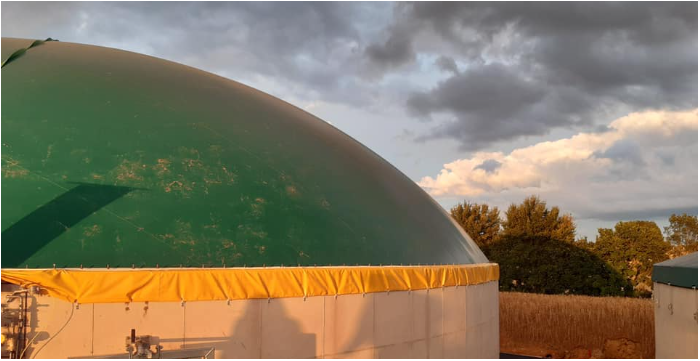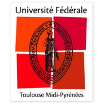Tools for the ecodesign
of industrial processes
- Frameworks and algorithms
for efficient multiobjective optimization - Integrated tools
for Life Cycle Assessment (LCA) - Sector-specific tools
for modelling, optimization and ecodesign

Project : Thermal modelling of anaerobic digestion
"Heat vision", a tool for thermal evaluation of anaerobic digestors with multimembrane gasholder using an exhaustive multi-compartment approach, allowing the quantification of heat transfers of all kinds (conduction, convection, radiation, advection) depending on the configuration, geometry, operating and design parameters.
Team members (Students and researchers) involved in the project:
- Romane Bonnefoi (Student, INSA Toulouse engineering school, GP3E)
- Brahyan Alberto Ramirez (Student, INSA Toulouse engineering school, GP3E)
- Mohammad Asadi (Student, Sorbonne University)
- Marco Avila Lopez (Researcher, TBI)
- Aras Ahmadi (Associate professor, INSA Toulouse, TBI)
Citations:
- Ahmadi, M. Avila-Lopez, L. Barna,
Pathways for the thermally optimal design and practice of anaerobic digestion in large-scale biogas plants: Heat transfer modeling and energy analysis,
Chemical Engineering Research & Design, Volume 197, 2023, Pages 884-907. - M. Avila-Lopez, C. Robles-Rodriguez, L. Tiruta-Barna , A. Ahmadi,
Toward thermal autarky for large-scale biogas plants: Dynamic energy modeling for energy efficiency in anaerobic digesters with enhanced multimembrane gasholders,
Fuel 339 (2023) 126978. - Aras AHMADI, Marco AVILA-LOPEZ,
Guide pour une pratique énergétique optimale de la méthanisation à la ferme en vue de la production de biogaz.
https://doi.org/10.48531/JBRU.CALMIP/KKPAHC.
Project : DyTox
A tool for temporal toxicity impact calculation
DyTox calculates the human toxicity impact and freshwater ecotoxicity impact due to pollutant emissions in the different environmental compartments. It is based on the existent Life Cycle Impact Assessment methods, which use for toxicity the combination of three factors: fate factor, exposure factor and effect factor. DyTox doesn't calculate characterization factors as the conventional methods do, but, instead, it calculates directly the impact.
The fate of pollutants in the environment is calculated dynamically based on the nested boxes concept. The following impact indicators are calculated in function of time (as impact per time unit):
- HTP Human Toxicity Potential, composed of Human non-cancer and Human cancer, midpoint, in [cases day⁻¹]
- FEP Freshwater Ecotoxicity Potential, midpoint, in [PAF m³ day day⁻¹]
The cumulated HTP and FEP are also calculated: results in [cases] and [PAF m³ day], respectively.
DyTox is also compatible with LCI (Life Cycle Inventory) result files from DypLCA tool - a software for temporal LCI calculation for dynamic LCA.
References:
- Shimako, A.H., Tiruta-Barna, L., Ahmadi, A.,
Operational integration of time dependent toxicity impact category in dynamic LCA,
Science of the Total Environment, 599–600, 2017, 806-819


